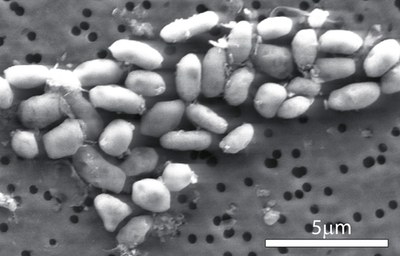Searching for ETby Lou Friedman
|
| Searching the whole sky without a clue of what or where to search is not really a strategy. |
I am underwhelmed by theoretical arguments in favor of extraterrestrial intelligence—usually based on the number of galaxies, stars, and planets, as well as long time scales. I am also underwhelmed by theoretical arguments against extraterrestrial intelligence—usually based on the complexities of both planetary and biological evolution. The scale of the universe and the unknowns of evolution are both daunting, and for all the talk and writing about extraterrestrial life and intelligence, they remain subjects without subject matter. We have no data.
Searching the whole sky without a clue of what or where to search is not really a strategy. But that is what we have been forced to do throughout the history of SETI. Even advocates of the “targeted” search have a whole sky full of stars of the right age and size to target, with no data to narrow the search. Perhaps that will soon change.
Progress in the search for extraterrestrial life has occurred outside of SETI. Studies on Earth reveal new thinking about the conditions for life and habitability: not just bizarre extremophiles, but also the chemical possibilities that might be precursors or contributors to life. However, the big unknown remains how the transition from simple cell life to complex organisms occurred. Is that easy and common, or rare and serendipitous?
The explosive rate of discovery of extrasolar planets is also advancing SETI. The number of exoplanets is now over 500, and probably will be thousands by the end of 2011. These planets exhibit a huge variety in size, orbit, composition, and, undoubtedly, physical characteristics. We already have strong indications that Earth-sized planets are not rare. We also know that the big events of planetary evolution that take place in our solar system likely occur in other solar systems as well. Kepler is going to give us new results early next year. It will not be very long before we will be able to draw conclusions about the habitability on extrasolar planets.
As far as discovering extraterrestrial life, that will be difficult to do conclusively even if we observe chemical and atmospheric properties on extrasolar planets. (Look at the controversy about the methane measurement on nearby Mars for example). I haven’t given up on the other worlds in our solar system. Many in the field of astrobiology say that the prime targets of their interest are Europa, Titan, or Enceladus. Those places may be extreme, but are less so than many extrasolar candidates.
And then there is Mars. In my view the search for life and habitability on Mars is still the biggest motivation for space exploration. There are many scientists still quite positive about finding life on Mars (or at least evidence of past life) in the next few decades.
| The jump from a planet having the right conditions for life, to life itself, is small, but the jump from life to intelligence is huge. |
But what about SETI? None of the data or discovery of exoplanets is relevant to the question of intelligent life. However, the new information may help define a strategy for SETI that is more than just looking everywhere. In a few years we should be able to identify targets of high interest because of their conditions for life and habitability. Having specific locations to investigate, we may be then able to return to “magic frequencies.” We also are developing new capabilities in laser searching: optical SETI.
The new planet discoveries and the new information about exotic and extreme life on Earth also may help open up our thinking about how to search for extraterrestrial life, whether it is primitive, evolved, or even intelligent. Paul Davies has challenged us in his book, The Eerie Silence, to think about looking for biological signals: codes related to chemical precursors to life or in the physics “beyond the photon.” (See “Review: The Eerie Silence”, The Space Review, July 12, 2010) Our thinking about biomarkers and biological indicators of life certainly has been broadened by the discovery announced last week of an arsenic base in bacteria. Strategizing search parameters based on such data will finally be in the cards for SETI.
In my view the jump from a planet having the right conditions for life, to life itself, is small, but the jump from life to intelligence is huge, especially if we define intelligence in terms of communications capabilities that we can recognize. If there were an extraterrestrial world of dinosaurs or of amphibians (as existed on Earth for hundreds of millions to billions of years), then SETI could never find it. That will limit how much that effort is worth. However, having a real strategy and information to guide it will make searching for ETI more interesting, practical, and worthwhile. We will be able to learn as we search.
